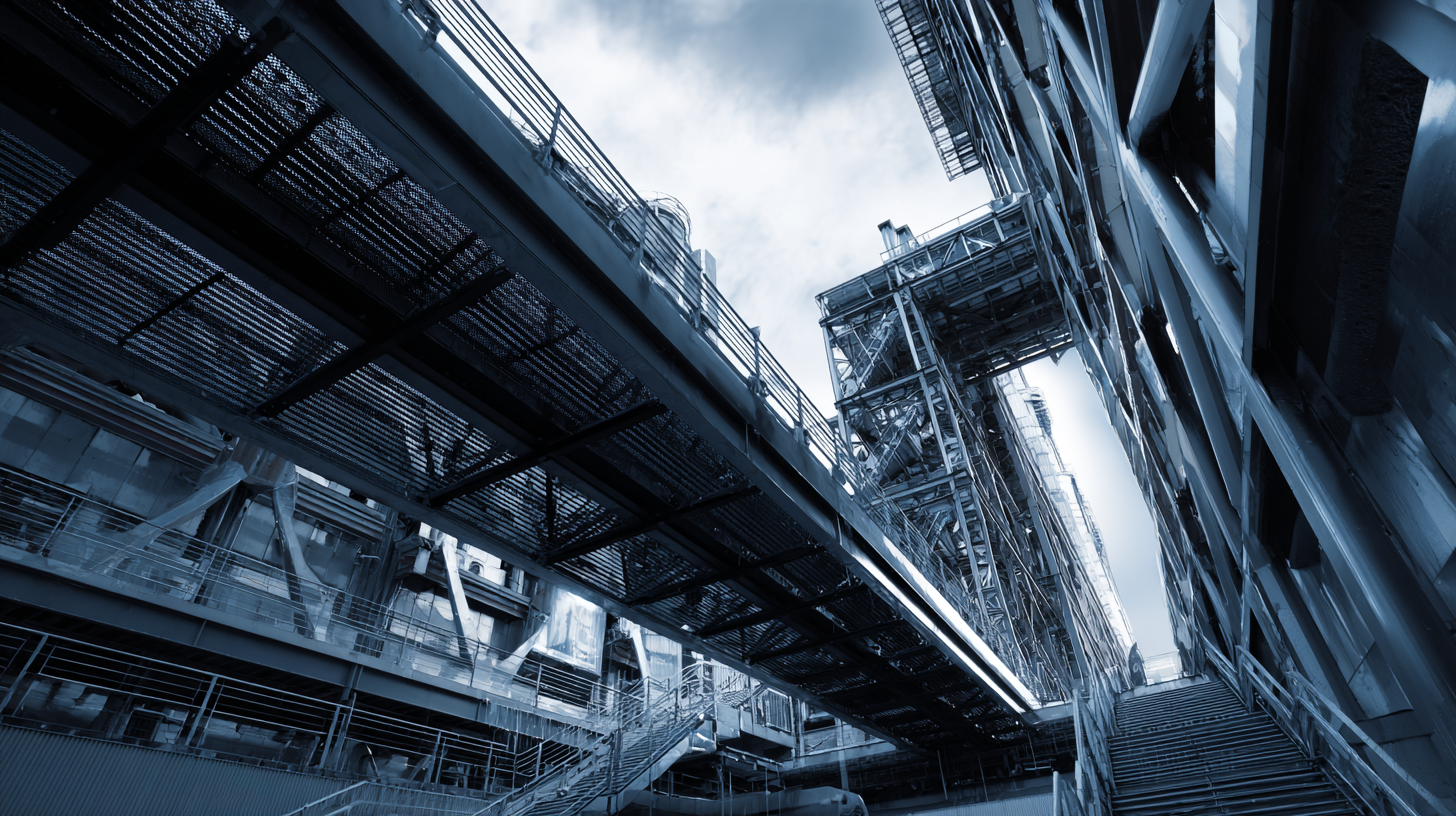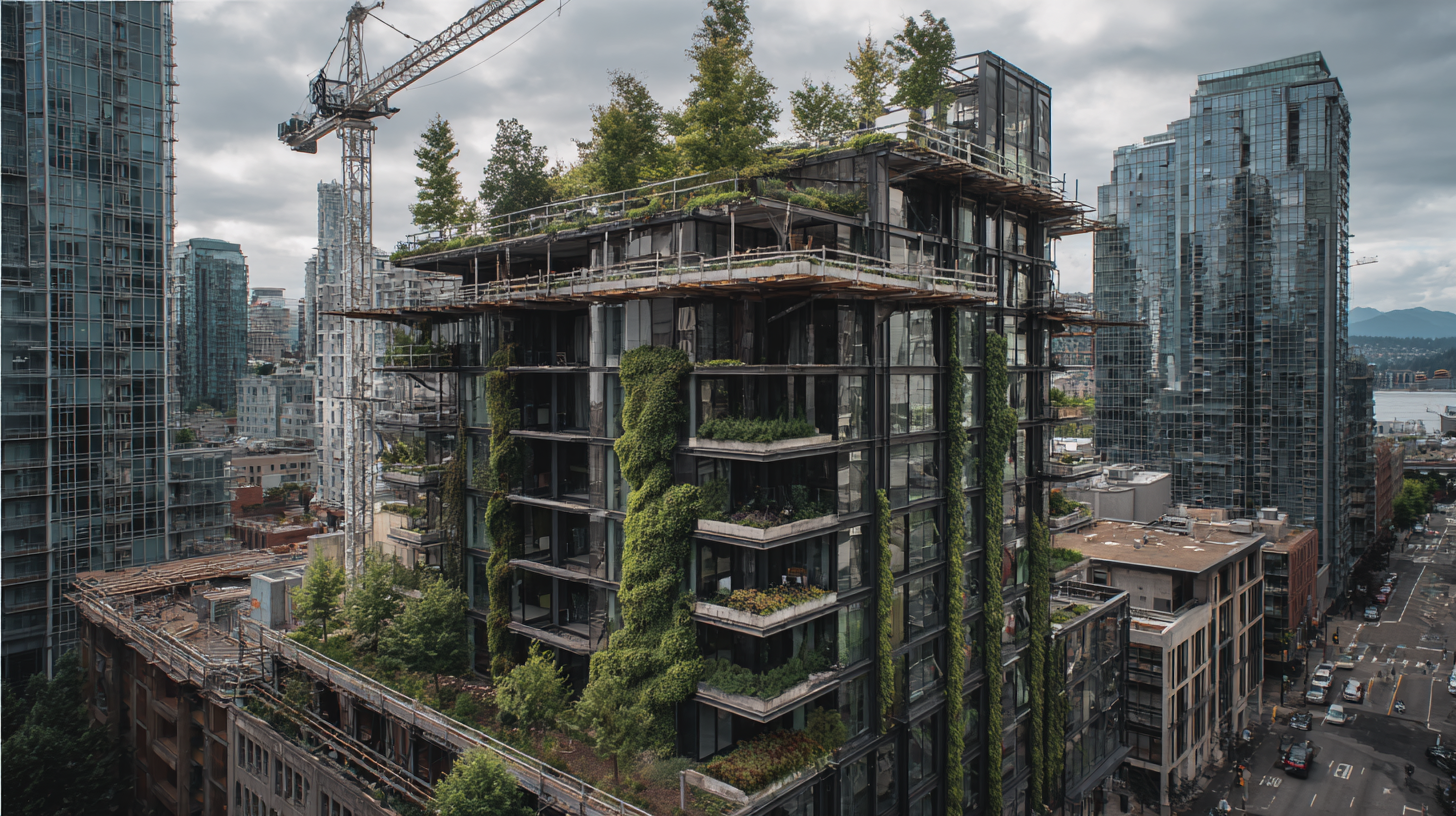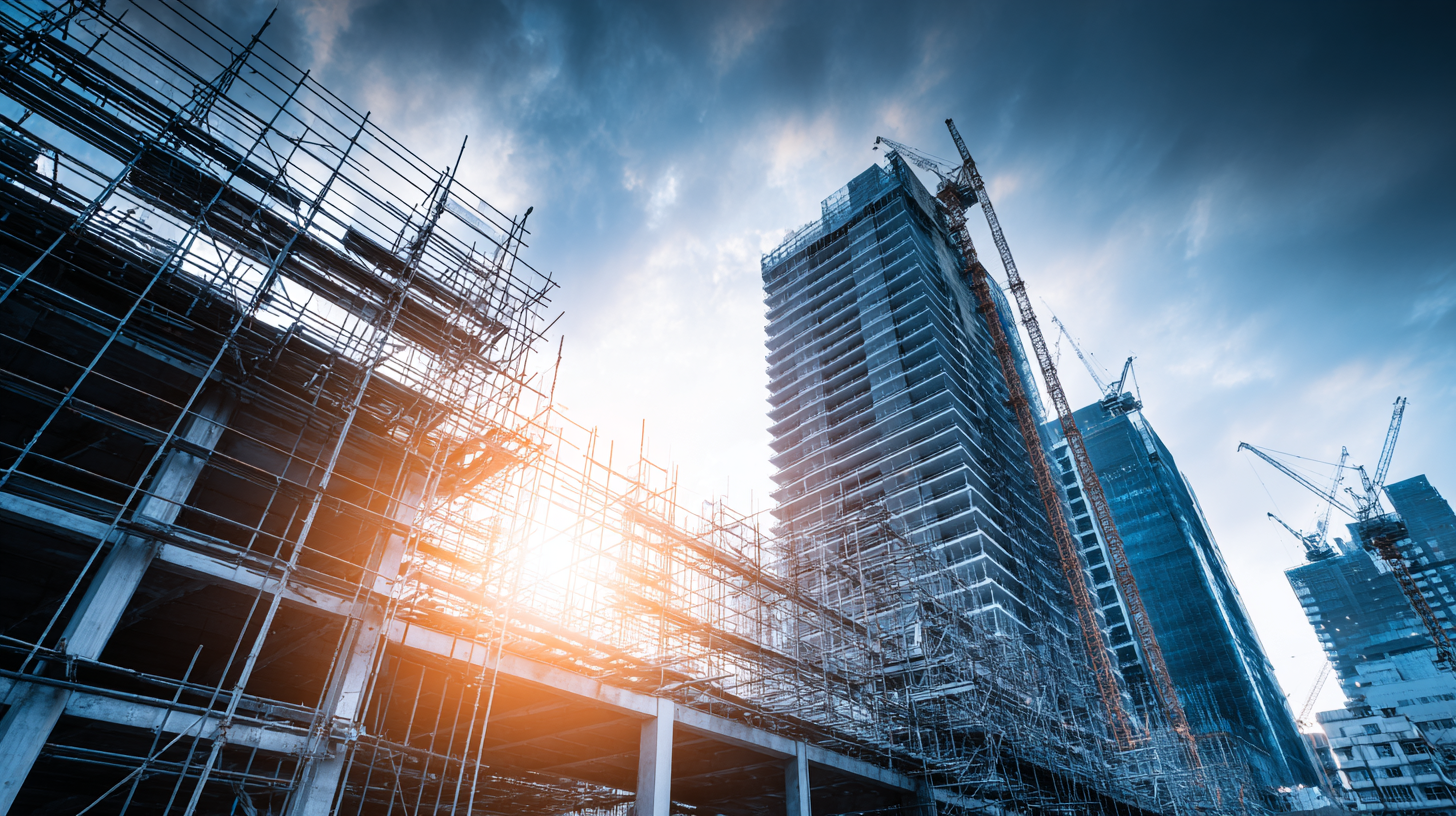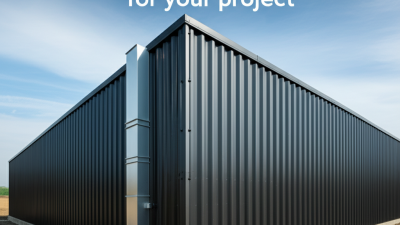
In the rapidly evolving field of construction, the integration of eco-friendly materials in Metal Construction projects has emerged as a pivotal strategy for promoting sustainable growth. Recent reports indicate that the global green building materials market is projected to reach $364 billion by 2022, reflecting a critical shift towards sustainability in construction practices. Furthermore, a study published by the Journal of Cleaner Production found that utilizing sustainable materials in construction can potentially reduce carbon emissions by up to 30%.

As the demand for environmentally responsible building solutions continues to rise, Metal Construction stands at the forefront of this transformation, leveraging innovative materials not only to enhance durability and performance but also to minimize environmental impact. This article will explore effective strategies for optimizing Metal Construction projects by incorporating eco-friendly materials, thereby aligning with regulatory standards and meeting market demand for sustainable architecture.
Eco-friendly materials play a crucial role in optimizing metal construction projects, aligning with the broader objective of sustainable growth. Recent reports indicate that the construction industry accounts for nearly 40% of global energy consumption and 30% of greenhouse gas emissions. To mitigate these impacts, builders are increasingly turning toward sustainable materials such as recycled steel and eco-friendly coatings. According to the World Steel Association, using recycled steel in construction can reduce energy consumption by up to 75%, offering substantial environmental benefits.

In addition to recycled materials, innovations like bio-based paints and low-VOC (volatile organic compounds) coatings are gaining traction in metal projects. These materials not only reduce harmful emissions but also enhance the longevity of metal structures by providing better protection against corrosion and wear. The market for eco-friendly construction materials was valued at approximately $150 billion in 2022 and is projected to grow significantly in the coming years, reflecting a strong shift toward sustainable practices in the industry. By prioritizing these eco-friendly materials, metal construction projects can significantly contribute to a sustainable future while meeting regulatory standards and consumer demand for greener building solutions.
Sustainable practices in construction have gained immense traction in recent years. According to the 2022 Sustainable Construction Market Report, the global green building materials market is projected to reach $364 billion by 2027, reflecting a compound annual growth rate of 11.6%. This shift is not only beneficial for the environment but also for the construction industry’s bottom line. Using eco-friendly materials can minimize energy consumption and reduce waste, leading to significant cost savings in the long run. Projects that incorporate sustainable practices often see a higher return on investment and increased property value.
Tips: When planning a construction project, consider incorporating recycled steel or sustainable concrete alternatives. These materials not only reduce environmental impact but also enhance durability and energy efficiency. Additionally, collaborating with suppliers that prioritize sustainability can streamline the procurement process and ensure that you are sourcing the best eco-friendly options available.
Investing in sustainable practices can also enhance your company's reputation. A survey from the World Green Building Council shows that 79% of consumers are more likely to engage with brands that are committed to sustainability. By fostering a transparent approach and communicating your eco-friendly initiatives, you can attract a loyal customer base and stand out in a competitive market. Implementing these strategies will ensure that your construction projects not only contribute to sustainable growth but also yield considerable benefits in terms of operational efficiency and corporate image.
In the realm of metal construction, the push for sustainability is reshaping design practices. Utilizing recyclable and renewable resources is no longer a trend but a necessity. According to a report from the World Steel Association, approximately 90% of steel is recycled globally, making it one of the most recycled materials on the planet. This remarkable statistic highlights the potential for metal structures designed with recyclable materials to significantly reduce waste and carbon footprint, contributing to a circular economy.

Moreover, innovations in metal construction are leaning towards the incorporation of renewable resources. For instance, advancements in bio-based coatings and paints derived from natural materials are paving the way for eco-friendly finishes that complement the strength of metal. A study by the Global Infrastructure Facility indicates that using sustainable materials in construction can lead to a 15-20% reduction in greenhouse gas emissions. This shift not only promotes environmental responsibility but also meets the growing demand from consumers and companies for greener building solutions, embodying a future where metal structures are synonymous with sustainability.
Implementing energy-efficient techniques in metal fabrication is crucial for fostering sustainable growth in construction projects. According to a report by the U.S. Department of Energy, energy efficiency measures in manufacturing can reduce energy consumption by up to 30%. This reduction is significant not only for lowering operational costs but also for minimizing the carbon footprint of metal fabrication processes. Techniques such as optimizing machining processes and employing electric-powered tools can drastically enhance energy efficiency.
Moreover, integrating renewable energy sources like solar panels in fabrication facilities further exemplifies the shift towards eco-friendly practices. A study published by the World Steel Association indicates that the steel industry accounts for approximately 7% of global CO2 emissions. By adopting energy-efficient practices and utilizing renewable energy, companies can contribute to a substantial reduction in these emissions. Additionally, recycling scrap metal improves sustainability, as it requires significantly less energy compared to producing new metal. The International Recycling Bureau reports that recycling aluminum saves up to 95% of the energy required for virgin production, making it an ideal choice for sustainable metal construction projects.
In the construction industry, the long-term impact of sustainable growth is increasingly being quantified through various metrics. According to the World Green Building Council, buildings account for 39% of global carbon emissions, emphasizing the urgent need for eco-friendly materials in metal construction projects. By utilizing materials such as recycled steel and sustainable insulation, companies can significantly reduce their carbon footprint. Research indicates that green buildings can lead to a 20% reduction in energy consumption, illustrating the effectiveness of sustainable practices not just in construction efficiency, but also in operational sustainability over time.
Moreover, studies by the McKinsey Global Institute reveal that adopting sustainable practices can yield financial benefits that enhance long-term project viability. For instance, projects incorporating eco-friendly materials can see lifecycle cost savings ranging from 10% to 30%. These savings stem not only from reduced energy consumption but also from lower maintenance costs and increased property value. As the demand for sustainable construction grows, the ability to measure these impacts through metrics such as energy efficiency, material longevity, and overall ecological footprint will become vital for stakeholders aiming to align their projects with global sustainability goals.
| Project Name | Eco-Friendly Material Used | Estimated Cost Savings (%) | Reduction in Carbon Footprint (tons) | Project Duration (months) | Long-Term Impact Score (1-10) |
|---|---|---|---|---|---|
| Metal Structure Revamp | Recycled Steel | 15% | 20 | 12 | 8 |
| Eco Warehouse | Bamboo Panels | 10% | 15 | 10 | 7 |
| Sustainable Office Complex | Green Insulation | 20% | 25 | 15 | 9 |
| Community Center Project | Composite Materials | 12% | 18 | 8 | 6 |
| Urban Park Redevelopment | Reclaimed Wood | 18% | 30 | 6 | 10 |





